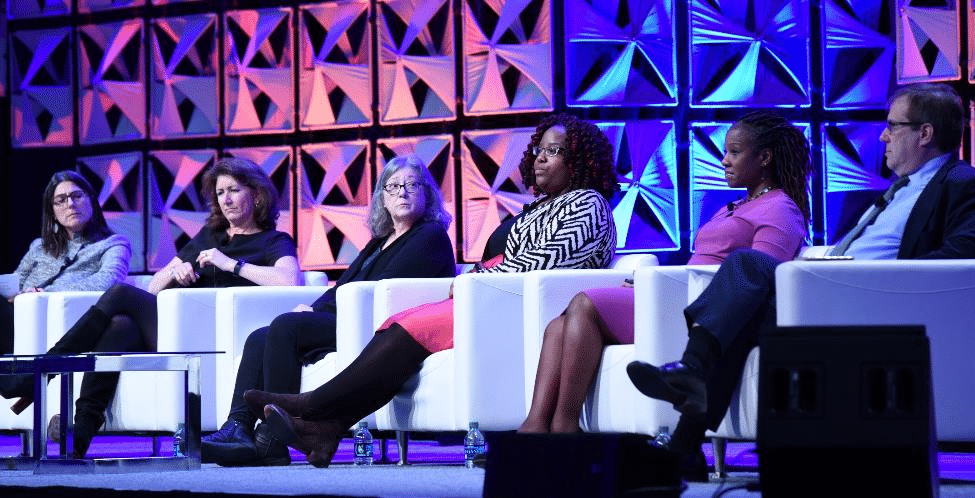Panelists took a Deeper Dive into Addressing the Cost of Clinical Practice at #AACTE19

The Deeper Dive session, “Too Expensive to Ignore,” held during the AACTE 2019 Annual Meeting explored the many creative ways educators are working to address the high costs associated with becoming a teacher. The panel discussion was moderated by Karen DeMoss, executive director of Prepared to Teach, Bank Street College of Education, and the presenters were Tara Kini, director of state policy at the Learning Policy Institute (LPI); Karen Riley, dean of the College of Education at the University of Denver; Karen Kindle, division chair, Teacher Residency and Education at the University of South Dakota (USD); Jeannie Aversa, coordinator of educator effectiveness at the Syracuse City School District; and Nichole Brown, director of field placement and project director, Teacher Opportunity Corp II at SUNY Oswego. The group of educators engaged in a lively conversation about how to create sustainable funding for teacher residencies.
DeMoss began the discussion with an overview of the reasons solutions to the funding problem are necessary. She shared that attracting diverse candidates to the teaching profession requires a focus on the money matters that teaching candidates care about. For example, 40% of undergraduates and 76% of graduate students work full time, and they incur debt that is often untenable in comparison to the salaries they can expect as teachers.
Kini spoke about her work with teacher residencies in California, where the state built coalitions comprised of unions and community-based organizations to help fund K-12 teacher residencies. With teacher residency being a rich source of information about teacher training and quality, the coalitions used the data captured in their programs to convince California legislators that teacher residencies are a good way to address the state’s teacher shortage. The coalitions succeeded in getting the legislature to budget $75 million for this purpose.
The work is in its “early-days,” but “there is a movement afoot around the country,” said Kini.
The LPI program was designed with the goal of long-term sustainability with a focus on addressing candidate debt-burdens. Similar residencies are happening also in Pennsylvania and Texas.
Riley, presented information about universities as partners. She discussed the three organizations in Colorado that have come together in a private-public partnership to share best practices in pursuit of quality residency programs. The goal was to create a vision for change that could be replicated by the state, higher education institutions, and public schools. Tuition and debt-burden was the main focus. The partnering organizations used endowments and creative fundraising packages to fight what Riley referred to as the growing trend that is increasingly making teaching a profession for the “privileged class.”
Kindle discussed the issue of supervising students in residency programs. At USD, Kindle and her colleagues are reexamining how to create a value-based, cross-district approach to supervising teaching residents, where the university had placed 106 candidates in 26 school districts spread across hundreds of miles. The program was redesigned to create residency instructors who are responsible for clinical instruction and supervision. The instructors travel to and build relationships in the different schools that make up their districts.
“For this to work, the quality of the relationship between mentor and university supervisor and candidate must be strong,” said Kindle. “They have to know they can count on each other.”
Aversa and Brown spoke about the importance of having the school district at the table in order to build and sustain a residency-based partnership. The SUNY Oswego School of Education led -residency programs until the funding ran out, and continued the programs, unfunded, until they received funding from the state. The state school used this new funding to pursue a partnership with the Syracuse City School District, focusing on diversifying the candidates for Syracuse’s residencies with students of color. After students of color at SUNY complete their education, the school district helps the students gain employment with the city school system and fund their graduate education.
A video recording on this Deeper Dive session, “Too Expensive to Ignore,” is available to Annual Meeting attendees at aacte.org. Additional video recordings of the General Sessions and all Deeper Dives from the 71st Annual Meeting may be accessed in the AACTE Resource Library.
Tags: Annual Meeting, clinical preparation, funding, workforce development






